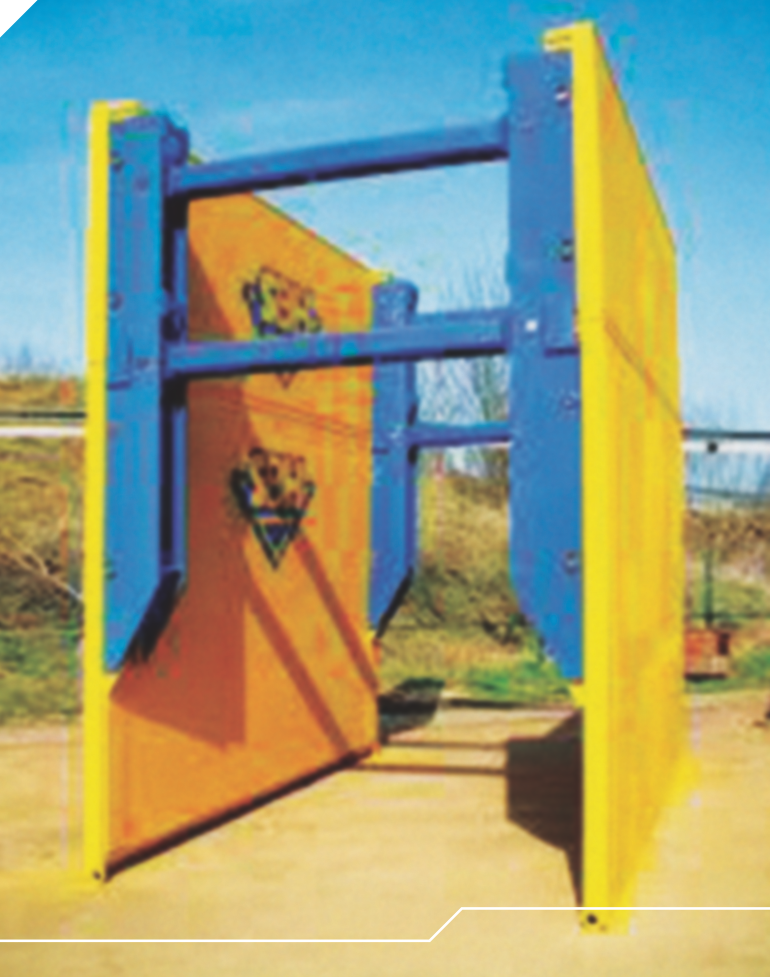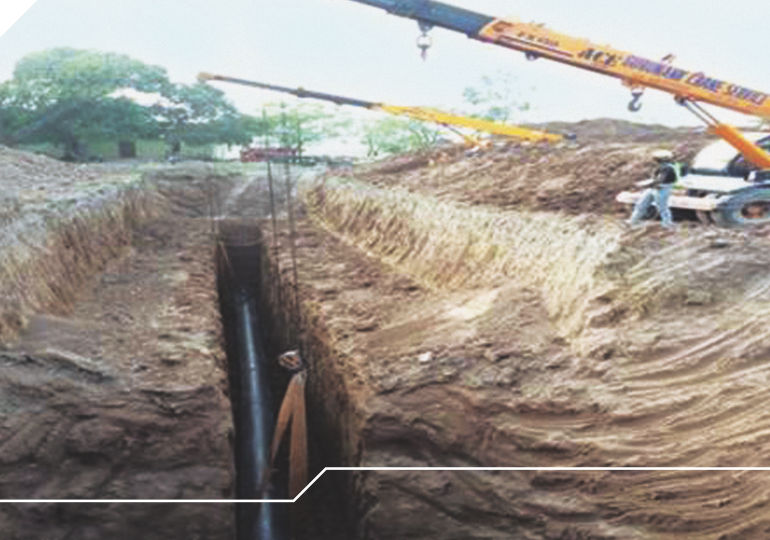 |
Safer Project Execution also Reduces Costs
Innovative HDPE pipe laying method cuts time
|

Safer Project Execution also Reduces Costs
Innovative HDPE pipe laying method cuts time
At the project site of IT City in Mohali, L&T Water and
Effluent Treatment business’s team devised a new
method for laying a nine-metre, deep trunk, sewerage
HDPE line. The standard method involves lowering pipes
using steel shoring and shuttering to avoid soil collapse.
However, in spite of using a shoring box, there is the
risk of a soil collapse and collection above the shoring
box. Additionally, the use of MS shoring plates requires
an 18MT Crawler Crane due to its high operating
radius, resulting in additional execution costs. Moreover,
executing pipe jointing at a nine-metre depth can also
lead to life threatening situations.
New methodology devised by the
L&T team
Based on the new method devised, the cross-section was
reduced, since there was no human movement inside
the trench. The slopes were designed to support the
weight of the soil, and a wider cross section was adopted
at the manhole chambers. Secondly, six-metre long
HDPE pipes were joined above ground to a length of 30
metres prior to lowering in the nine-metre-deep trench.
A subcontractor was encouraged to procure a Hydraulic
Butt Fusion machine, which was then used to lower the
pipes. Two 14 MT Hydraulic Cranes were used to lower
30-metre pipe spools. A 25 mm PP rope was used to pull
one end of the belt from the ground level to remove the
cotton belts from the lowered pipeline.
Result
The new method brought in cost savings to the tune of
 17.2 million, with safe operations, and no time lost to
injury. Moreover, the execution time was cut down by
six months, enabling the team to complete laying of 10
kilometres of pipeline in a year. The job included fusion
welding of 1,200 pipes, 0.3 million m3
of earthwork
excavation and construction of 300 manholes.
17.2 million, with safe operations, and no time lost to
injury. Moreover, the execution time was cut down by
six months, enabling the team to complete laying of 10
kilometres of pipeline in a year. The job included fusion
welding of 1,200 pipes, 0.3 million m3
of earthwork
excavation and construction of 300 manholes.
 17.2 million, with safe operations, and no time lost to
injury. Moreover, the execution time was cut down by
six months, enabling the team to complete laying of 10
kilometres of pipeline in a year. The job included fusion
welding of 1,200 pipes, 0.3 million m3
of earthwork
excavation and construction of 300 manholes.
17.2 million, with safe operations, and no time lost to
injury. Moreover, the execution time was cut down by
six months, enabling the team to complete laying of 10
kilometres of pipeline in a year. The job included fusion
welding of 1,200 pipes, 0.3 million m3
of earthwork
excavation and construction of 300 manholes.



|
| |
|























